50+ Sample Minutes of Meeting
-
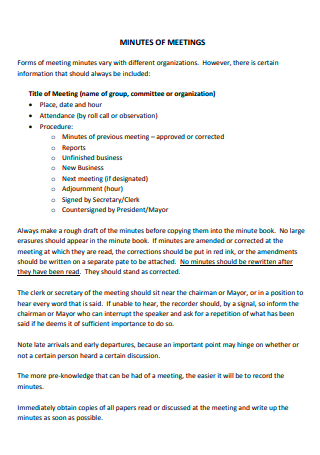
Minutes of Meeting Template
download now -
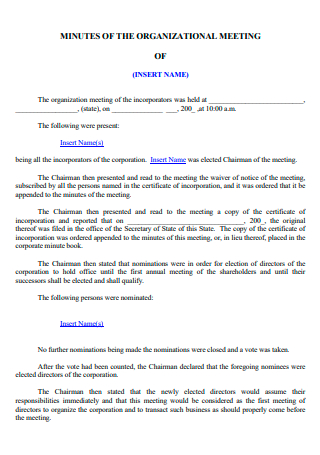
Minutes of Organizational Meeting
download now -
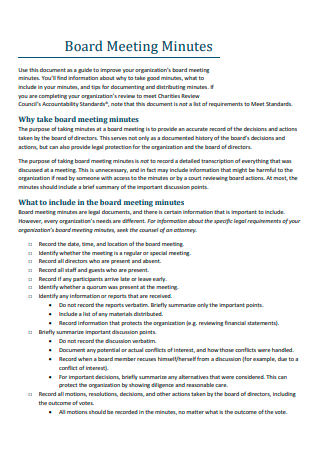
Board Meeting Minutes
download now -
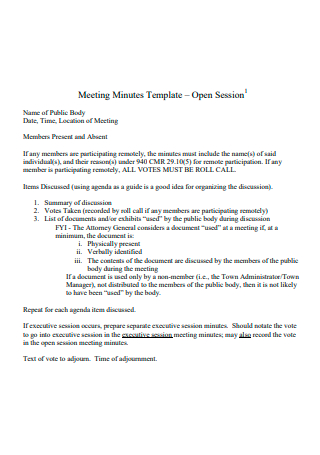
Open Session Meeting Minutes
download now -
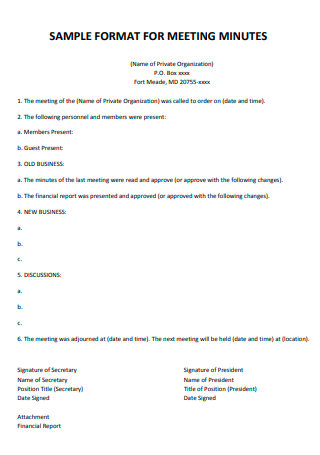
Meeting Minutes Format
download now -
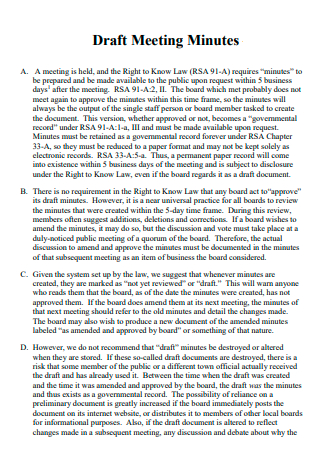
Draft Meeting Minutes
download now -
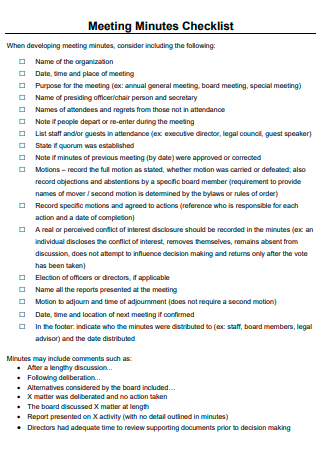
Sample Meeting Minutes Checklist
download now -
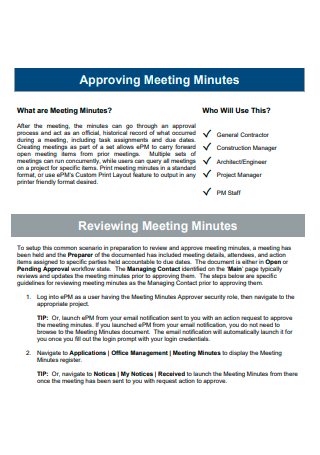
Sample Approving Meeting Minutes
download now -
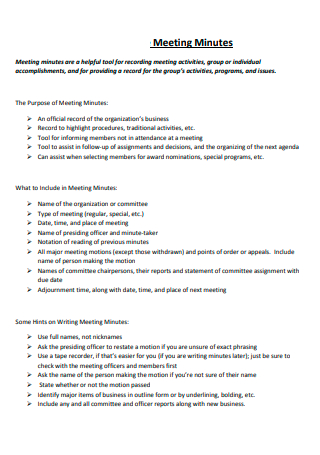
Basic Meeting Minutes
download now -
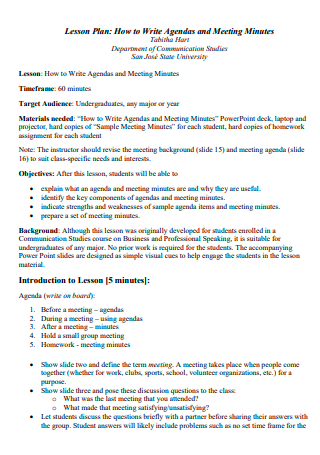
Agendas and Meeting Minutes
download now -
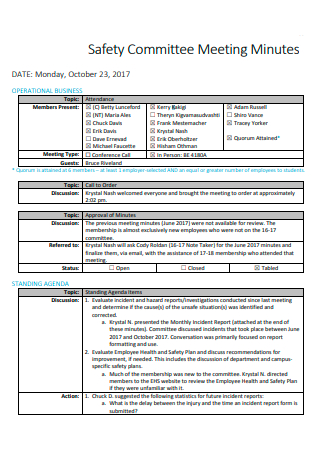
Safety Committee Meeting Minutes
download now -

Meeting Minutes in PDF
download now -
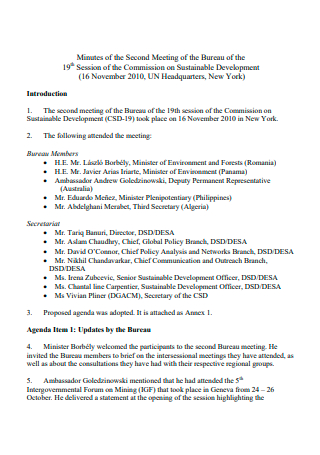
Minutes of Second Meeting
download now -
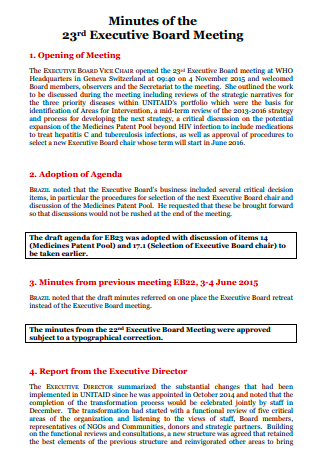
Minutes of Executive Board Meeting
download now -
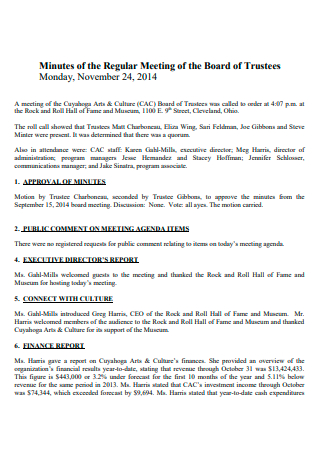
Minutes of Regular Meeting of the Board of Trustees
download now -
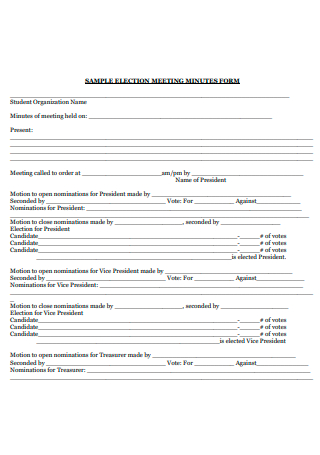
Sample Election Meeting Minutes Form
download now -
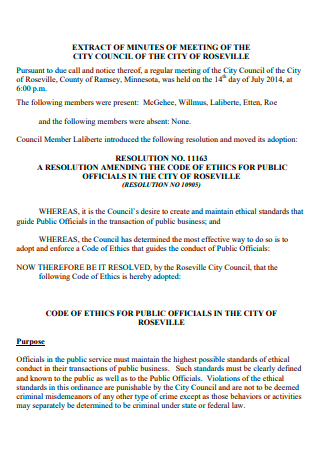
Extract Minutes of Meeting
download now -
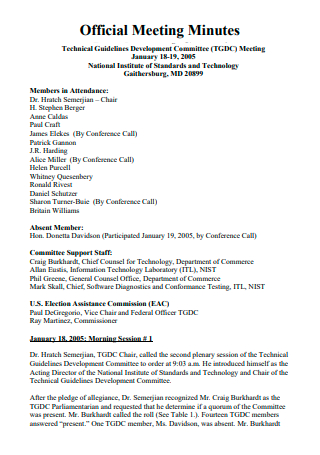
Sample Official Meeting Minutes
download now -
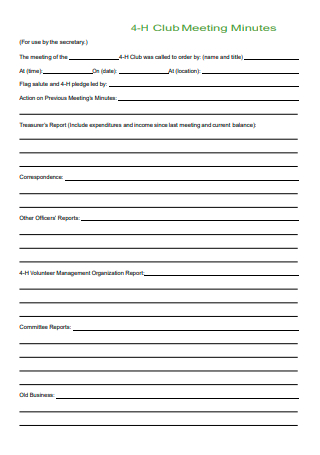
Club Meeting Minutes
download now -
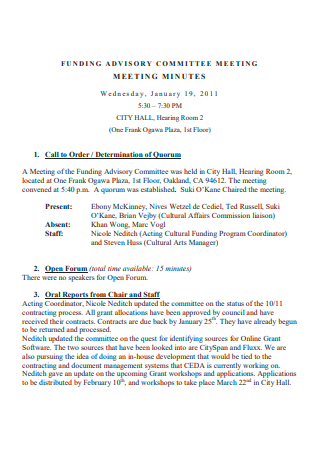
Advisory Committee Meeting Minutes
download now -
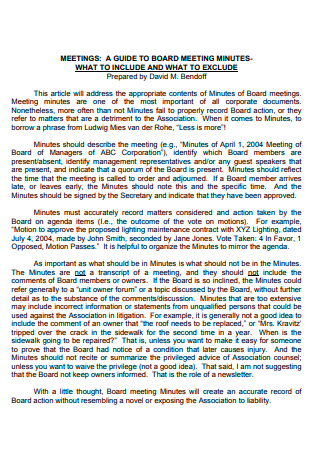
Board Meeting Minutes Template
download now -
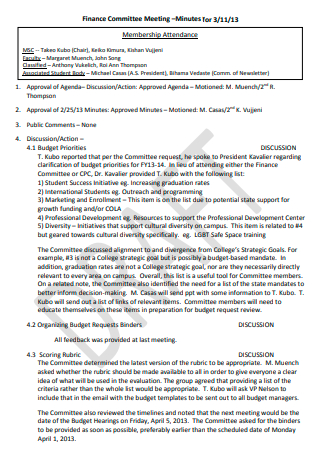
Finance Committee Meeting Minutes
download now -
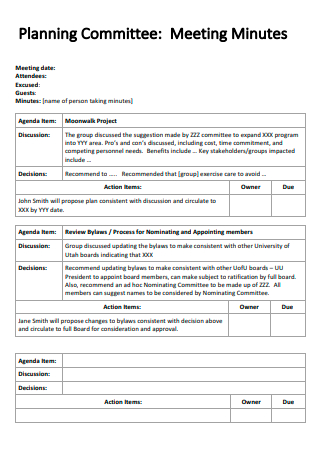
Planning Committee Meeting Minutes
download now -
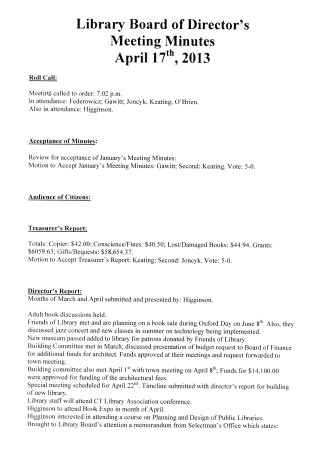
Library Board of Directors Meeting Minutes
download now -
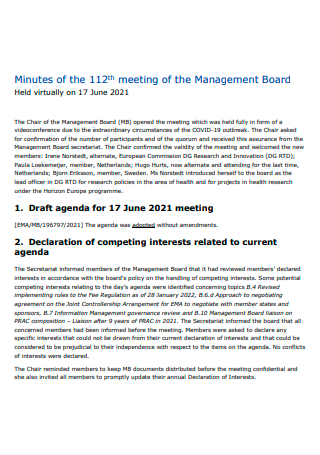
Minutes of Meeting of Management Board
download now -
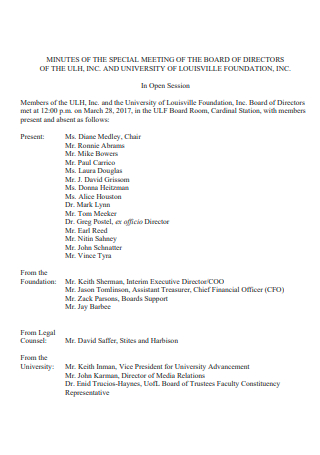
Minutes of Special Meeting of Board of Directors
download now -
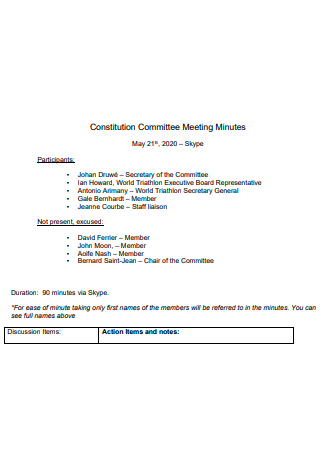
Constitution Committee Meeting Minutes
download now -
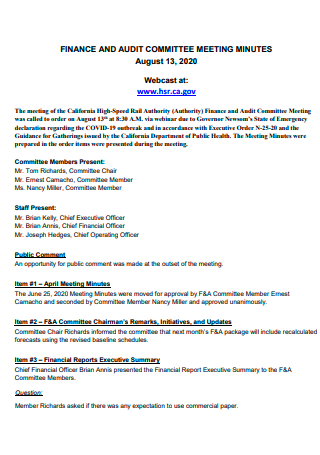
Finance and Audit Committee Meeting Minutes
download now -
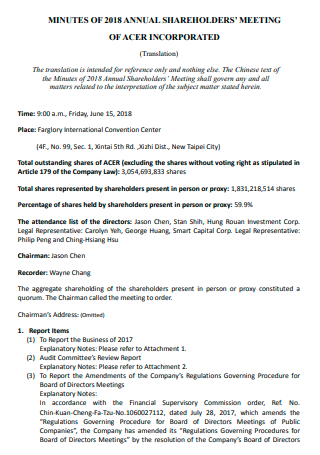
Minutes of Annual Shareholders Meeting
download now -
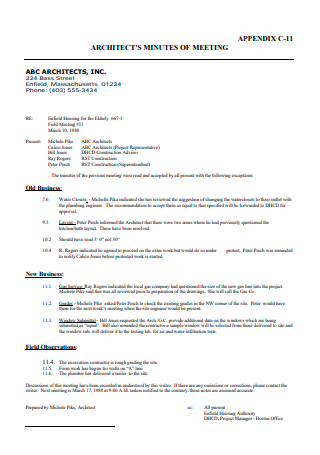
Architects Minutes of Meeting
download now -
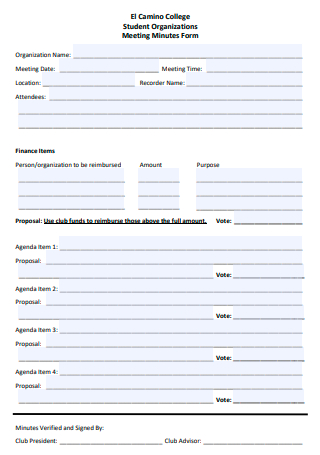
Meeting Minutes Form
download now -
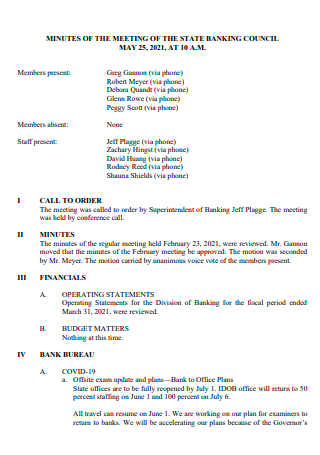
Minutes of Meeting of Banking Council
download now -
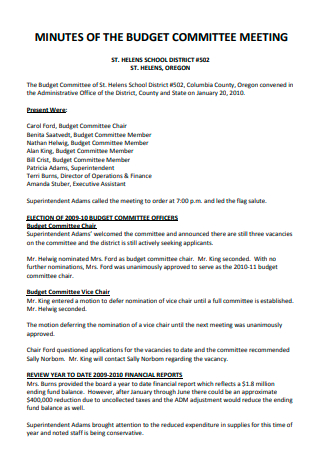
Minutes of Budget Committee Meeting
download now -
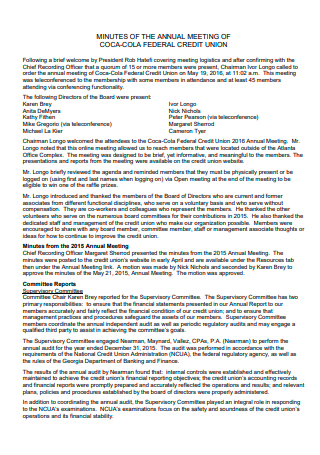
Sample Minutes of Annual Meeting
download now -
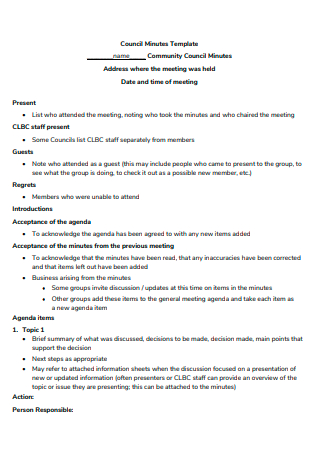
Community Council Minutes of Meeting
download now -
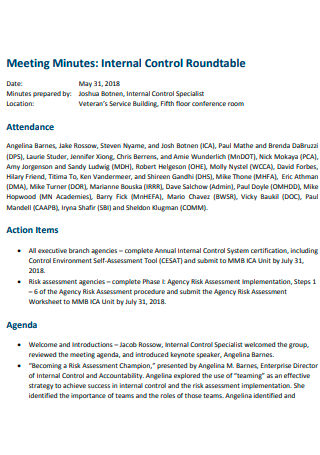
Internal Control Roundtable Meeting Minutes
download now -
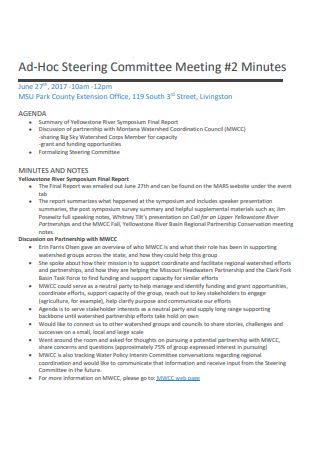
Steering Committee Meeting Minutes
download now -
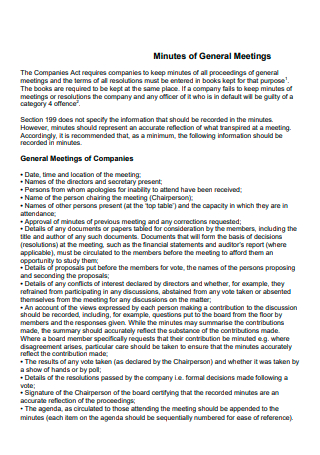
Minutes of General Meeting
download now -
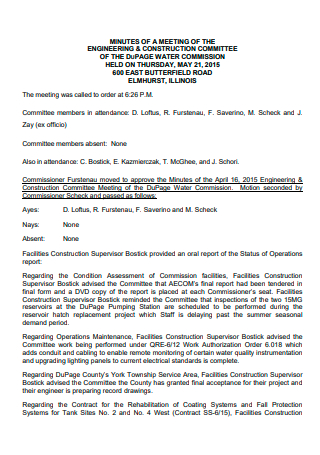
Minutes of Meeting of Engineering and Construction Committee
download now -
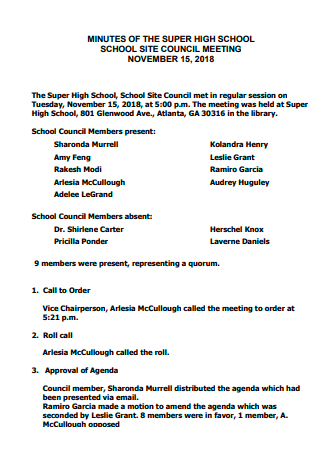
Minutes of Meeting of High School Site Council Meeting
download now -
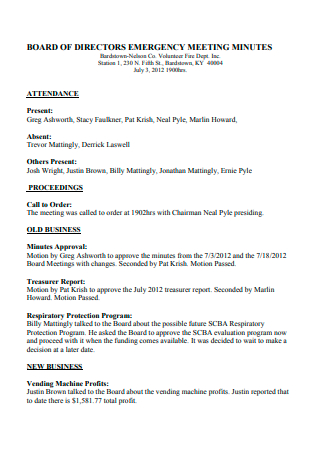
Board of Directors Emergency Meeting Minutes
download now -
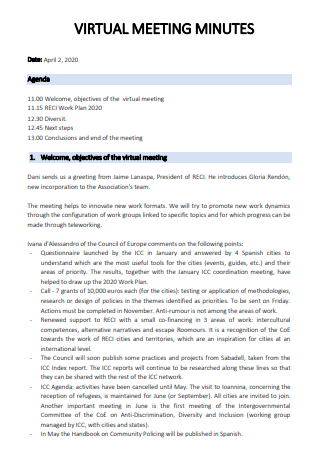
Sample Virtual Meeting Minutes
download now -
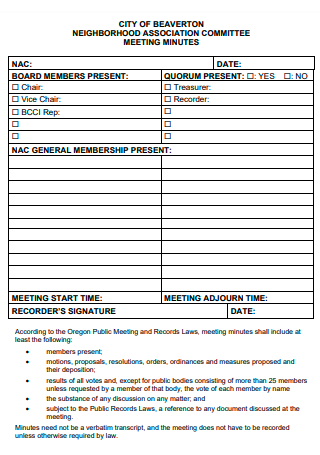
Formal Meeting Minutes
download now -
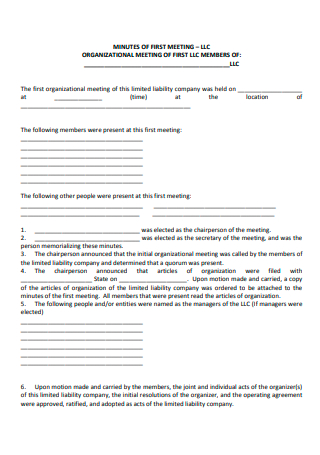
Minutes of First Meeting
download now -
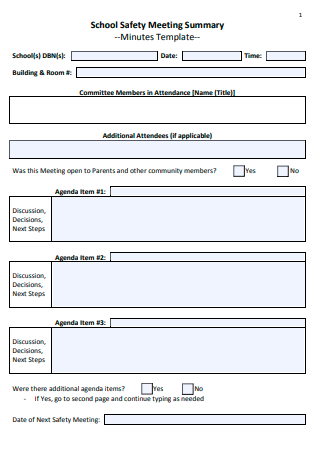
School Safety Meeting Summary Minutes
download now -
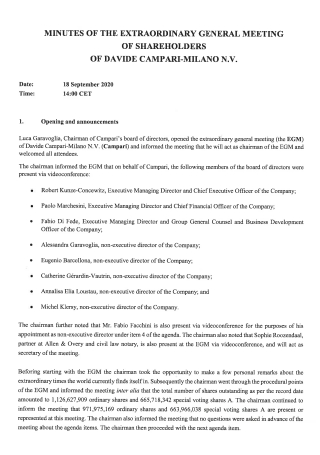
Sample Minutes of Extraordinary General Meeting
download now -
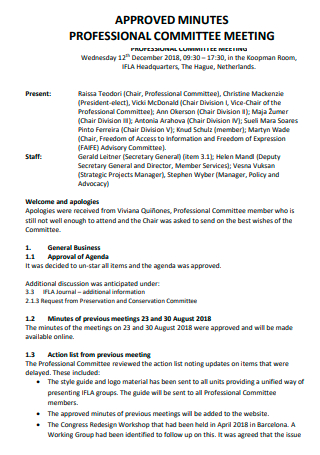
Approved Minutes Professional Committee Meeting
download now -
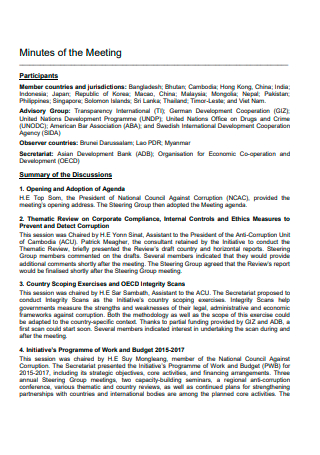
Printable Minutes of the Meeting
download now -
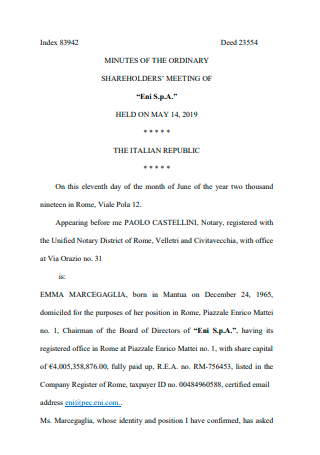
Minutes of Ordinary Shareholders Meeting
download now -
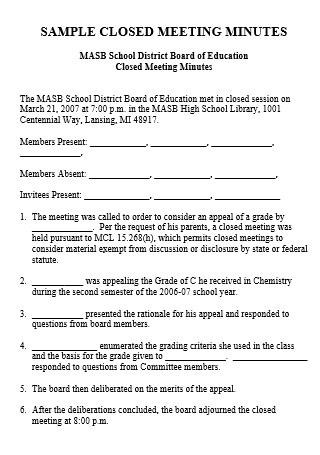
Sample Closed Meeting Minutes
download now -
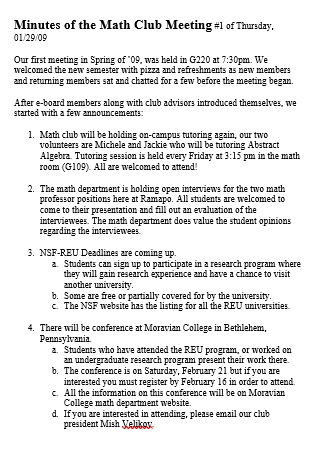
Minutes of Math Club Meeting
download now
What Are Meeting Minutes?
The meeting minutes are a written record of the discussion and decisions made. These are pertinent to all groups within an organization, including boards of directors, executive teams, and investors. Fellow advises creating meeting minutes for all gatherings requiring an official record. Then, this written record or transcript can be used to inform team members who could not attend about what transpired or to document decisions and action items that can be revisited. Therefore, previous meeting minutes can be used to inform future organizational choices. Non-profits, government entities, schools, public corporations, and trade unions are typically required to keep meeting minutes.
Benefits of Meeting Minutes
The meeting minutes are crucial. Many of you likely spend your whole day in meetings, frequently resulting in more meetings. It is simple to become overburdened by the deliverables from a meeting or the instructions you must provide to your team. Therefore, it is crucial always to have a team member responsible for recording meeting minutes present. The meeting minutes are a physical record of the discussion’s most essential points and outcomes. Therefore, why squander your time? Here are five factors:
Tips to Lead a Meeting
How do you feel when you arrive 15 minutes early for a meeting but it begins 15 minutes late? The schedule? Unclear. Who is in command? Unsure. Then the chaos commences, with everyone speaking at once and spitting out ideas, while you silently lament the lost time. Nonetheless, it need not be this way. The purpose of meetings is to bring people together to discuss and address problems and generate new ideas and solutions. Here are some strategies and tricks for effectively leading a discussion.
1. Set the Schedule
All meetings can only be productive if attendees know what is occurring. Even though it may seem apparent, many meetings begin without a defined purpose. The meeting agenda establishes the tone for the entire discussion; getting back on the way is much easier if people lose track of the conversation. If the meeting organizer ensures that there is an agenda before the meeting begins, attendees will swiftly fall in line.
2. Permit Everyone to Take Part
Typically, only one or two individuals in a meeting speak the entire time and monopolize the conversation. Assign relevant roles, topics, or updates that each participant can share with everyone to prevent this from occurring. With a more active role, participants are more likely to pay attention and feel authorized by their new responsibilities. This also enables you to analyze the attendees and ensure you only invite those who need to be there. Most people prefer to discuss issues that directly affect their employment. Therefore, if you’re the one calling the meeting, consider whether or not the issue impacts those you invite.
3. Start and End on Time
How frequently have you attended a meeting and had to wait for the leader to arrive? Far too many. It is the most exhausting thing ever; it saps all your energy, leaving you unable to attend the meeting. It is a dreadful practice that primarily affects those in positions of authority.
4. Respect the Time of Others
Unnecessary meetings are one of the greatest time-wasters at work and can severely harm your company’s finances. In the same vein as the last moment, respecting people’s time is crucial. Therefore, ensure that you construct an agenda for the meeting to remain focused on the meeting’s purpose and avoid digressions. Additionally, emphasize the significance of punctuality.
5. Adopt a Transparent Mode of Communication
As the meeting’s leader, it is essential to articulate ideas and opinions concisely and explicitly. This will inspire others to follow suit and simplify and clarify the situation significantly. People will quickly become tired if you rely excessively on technical terms. Instead of concentrating on what cannot be done, suggest alternative solutions to the problems. Be optimistic! It will help foster a positive atmosphere among attendees and make the meeting more enjoyable.
How to Record Meeting Minutes
Traditional methods could be more efficient. Why spend so much time formatting a template for meeting minutes when there is a more straightforward way? Now it’s time for the actual meeting! Our meeting experts have compiled seven best practices applicable to all teams and scenarios.
1. Date and Time of the Meeting
Note the meeting’s date and time before you begin writing the minutes. It might seem clear, but it’s still worth mentioning because it’s crucial to reflect on past meetings and remember when they occurred, what was completed, and what was still unfinished.
2. Names of the Participants
The following step is to record the identities of all participants and those who could not attend. Typically, a portion of the commencement of the meeting is devoted to the acceptance or amendment of previous meeting minutes, letting you review who experienced at the last meeting and create a draft of an attendee list. Use the work calendar invite to verify participant names as they join or enter the session.
3. Purpose of the Meeting
The “why” behind this meeting must be documented and made clear. In this meeting minutes section, explain in detail why this meeting was convened and what it hopes to accomplish. This will be especially helpful for those unable to attend the meeting and those using the meeting’s outcomes to make decisions.
4. Agenda Items and Topics Discussed
Utilize the meeting agenda as a general outline for your meeting notes. Use each agenda as a section to record your meeting notes, including any outcomes or significant decisions. It is an excellent idea to spread the meeting agenda in advance so everyone can provide input and suggestions. This also ensures that no one enters the room unaware of what will be discussed. Using a meeting-minute template can save you a lot of time and effort. Utilizing the same template can also foster a sense of familiarity.
5. Key Decisions and Action Items
Effective meetings result in the assignment of tasks to various participants. Record any decisions or action items immediately to transcribe them accurately. The capture of everything needs to be more attainable. Instead, listen for measures that must be taken about the identified vital decisions, recommendations, challenges, or solutions. Ensure that these critical insights stand out in the meeting minutes so they are remembered. This may involve including a checkbox, emphasizing, etc.
6. Next Meeting Time and Location
When taking formal meeting minutes, it is essential to include these in the next meeting regarding this project report or topic of discussion. This gives attendees a general idea of how long they must complete their designated responsibilities—knowing when your next meeting will allow you to control your time and prioritize your tasks. It is equally essential to comprehend the location of your meeting, whether it takes place online or in person.
7. Included Documents for the Report
The final part of the meeting summary report should be supplementary documents that should be distributed alongside the minutes. Consider whether any documents used or referenced during the meeting would benefit your team members. This may include a log of actions or issues, KPIs, updates, or changes to the project. It is common for teams to record the meeting or create an automatic transcript, mainly if the meeting is conducted via a video conferencing service such as Zoom or Google Meet.
FAQs
What makes a productive meeting?
Ensure you know the topics and duration of each meeting, and adhere to these parameters. Share the agenda beforehand to ensure attendees are prepared and can provide input. If there is no agenda, the meeting must be rescheduled or canceled.
What works well in a meeting?
A productive meeting should result in innovation and vitality. This occurs when individuals actively participate as opposed to merely attending. Too often, brainstorming sessions could be more effective, despite their frequency. It is not idea generation itself that is important, but rather the execution of those ideas.
What is a key priority when closing a meeting?
Consider revisiting the objectives, key insights, and critical ideas during the conclusion. Attempt to summarize the key concepts. If your agenda includes intended outcomes, you can review them during the meeting’s conclusion to ensure all tasks list are completed.
Writing meeting minutes can be manageable. Their sole aim is to make your life less stressful by allowing you to refer back to what was discussed and the most critical outcomes. In this article, Fellow meeting experts define meeting minutes and explain their significance. We discussed the various phases of taking meeting minutes, including before, during, and after the meeting. We have supplied templates for formal and informal meeting minutes so that you can test them and see if they work for you.
